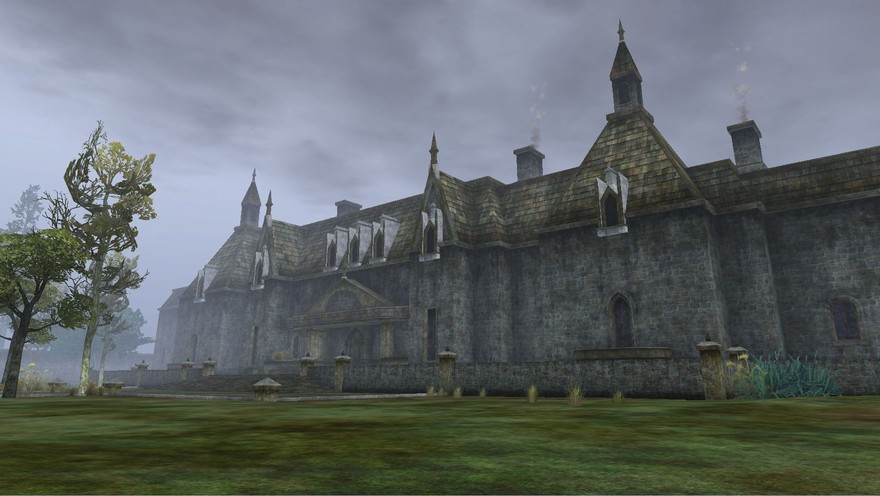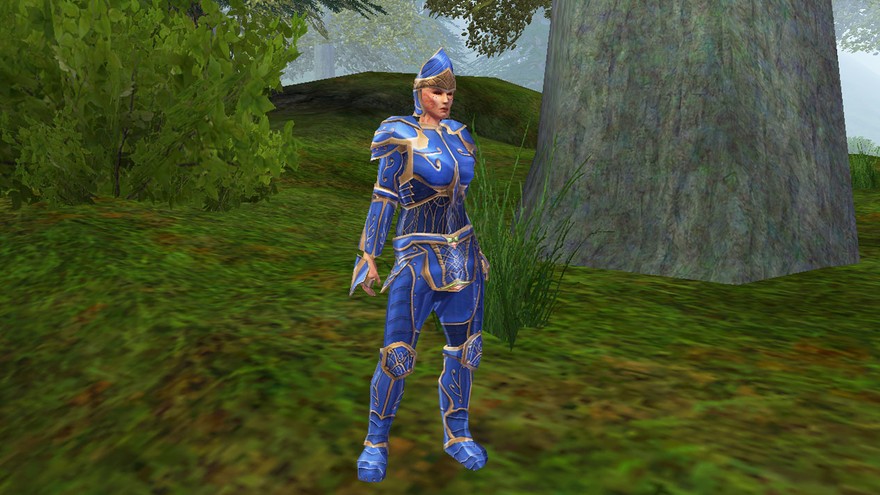“You’re in our world now,” EverQuest declared upon its release back on March 16, 1999. It was a phenomenon that peaked in 2001 with over 500,000 subscribers, a meager count when compared to more popular contemporary online games. The last time I signed off EverQuest was in 2005. I didn’t think I’d ever look back after pouring six years of virtual blood, sweat, and tears into the game. By then, EverQuest had been surpassed both technically and graphically outdated by World of Warcraft, a much prettier and more user-friendly game rich with the lore of Blizzard’s fantasy real-time strategy game. But I’ve surprised myself, glancing over my shoulder from time to time as each anniversary serves as a reminder that EverQuest is still around. It wasn’t supposed to be around this long. It’s like EverQuest never got the invitation to its own funeral: it was expected to die a quiet death with each substantial massively multiplayer online role-playing game released over the years.
“We see absolutely no reason for EverQuest to ever end,” Dave Georgeson, Sony Online Entertainment’s Director of Development for the high-fantasy role-playing game franchise, said by email. It seems like a hyperbolic statement, but EverQuest is still around because it has adapted over the years. It is self-sustaining thanks to a thriving community and a development team running on high morale doing consistent work to keep the game growing. Georgeson reiterated that if my last impression of the game was from more than a few years ago, I should check out what they’ve been doing lately.

I accepted his challenge by taking SOE up on its 15th anniversary offer to ex-players for a free upgrade to a level 85 heroic character. Logging in again is like visiting the town where I grew up. So many things have changed that it feels alien, but there’s just enough there to spark a little familiarity. Nine years is a long time to be away from any massively multiplayer online role-playing game. The level cap has increased from 75 to 100, players have the ability to hire mercenary non-player characters, and the game switched to a Free-to-Play model on its 13th anniversary that was quite restrictive upon its implementation but has steadily improved since 2012. I didn’t even know where to begin, so I visited an old world zone I used to haunt.
The first night back in game was comically disastrous, resulting in a submitted help ticket to SOE’s support site entitled, “I’m a moron.” I managed to get a level 85 monk stuck in a pit with no means of escape. I received an email a short while later stating that my character had been moved back to the safety of the Plane of Knowledge, EverQuest’s hub leading to over 1500 zones. It is safe to say that most of the zones are virtual ghost towns that exist simply to exist, something Brad McQuaid, co-creator and former Senior Game Designer of EverQuest, has lamented. “Empty zones are bad,” he said. “Having your artists and world builders work for months on a really cool zone and then have no reasons for players to go there is just really bad.” Many of the old world zones still appear the same as they did at launch, visually dull with low polygon counts and flat, muddy textures. A few specific zones, like Lavastorm Mountains and Highpass Hold, have been updated with the advent of new content or expansions. They may be more visually appealing, but they remain desolate, just like the outdated zones surrounding them.
I’ve always wondered why there was never a full-scale revamp for EverQuest, similar to what Blizzard did with World of Warcraft: Cataclysm. That update featured completely redesigned zone graphics and over 3500 new quests, giving players an all-new low and mid-level experience. It seemed like a natural way to update all of that unused real estate. Georgeson pointed out that a complete overhaul of EverQuest isn’t in the cards; SOE can’t dedicate the time and resources to such a monumental task. But the newest zones have been vastly improved in comparison to the rest of the game. Call of the Forsaken looks like it belongs in a completely different game. The environments in new zones like the Bixie Warfront and Ethernere Tainted West Karana feature bright colors and detailed textures. They aren’t quite as stunning as a game like Final Fantasy XIV, but considering EverQuest’s mileage, it’s still pretty impressive.

“EverQuest has always been a flavor you can’t get anywhere else,” said Georgeson. It is the game that set the stage for most other modern fantasy massively multiplayer online games. The vision has always revolved around adventure, exploration, and social interactivity. Players forged bonds, some lasting beyond the game, and they raided. Guilds are still recruiting on the official EverQuest forums for players to raid end-game content, just as they always have. “You are rarely put in a situation where you truly find out who your friends really are,” said McQuaid. “In a good MMO, you run across this, where something bad has happened, and you need help, much more often than I think most do in real life.” Staying true to its vision is exactly what makes EverQuest stand out as a different kind of MMO these days. There’s comfort in knowing that after 15 years and 20 expansions, EverQuest is still the same game at its core.
McQuaid believes that the next five to ten years will consist of many, smaller, focused MMOs that developers won’t have to pour hundreds of millions of dollars into. That is the vision for his latest venture, Pantheon: Rise of the Fallen, which failed to secure Kickstarter funding. With the status of Pantheon up in the air, we might be a long ways off from McQuaid’s vision. The SOE Live team continues to add on to Norrath. At the rate of its protracted expansion, it seems like EverQuest could very well continue on forever. Georgeson called the renewed interest in EverQuest a mini-Renaissance. The franchise’s outlook is strong as EverQuest and EverQuest II carry on and SOE expands the world of Norrath with EverQuest Next and Landmark. “We couldn’t be prouder of EverQuest and all of the other games in the franchise that exist because of the original,” Georgeson said. “Long live EverQuest.”
Header image via Syeefa Jay
